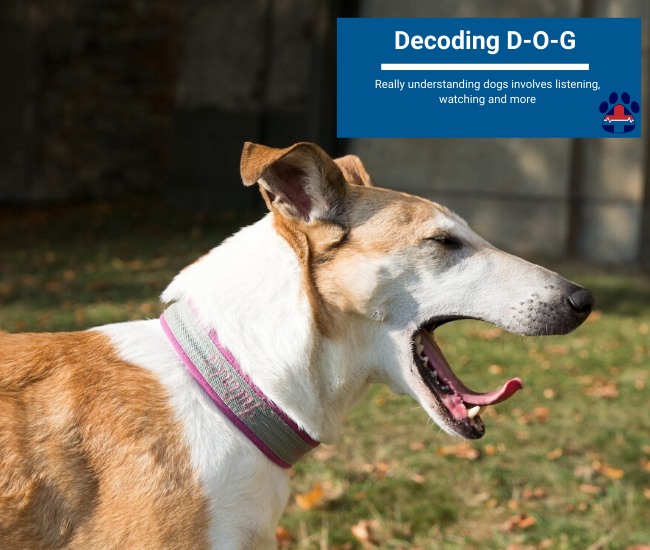Really understanding dogs involves listening, watching and more.
Article was written by our Master Instructor Arden Moore
Raise your paw, er hand, if you ever experience a case of canine confusion. By that I mean, you really don’t know what the dog is trying to communicate to you. It happens more than you may realize.
Dogs come in all sizes, breeds and temperaments. But dogs never lie or deceive. Their body languages and vocalizations are consistent. Their “talk” is always clear whether they are communicating with people, each other or even feline housemates.
Dogs deliver messages via their postures, tail positions, tail movements, eyes, actions, sounds and much more. They do their best to deliver their canine cues to us, but sometimes we misinterpret their signals. We may quickly declare a dog who spills his kibble on the kitchen floor to be a finicky, messy eater. But the real reason may be that he is enduring undiagnosed mouth pain because of a broken tooth or infected gums. We fail to distinguish the “bark-bark-bark” that a client’s dog sounds to alert the approach of a delivery work from the “bark-bark-bark” that he uses to convey sheer boredom or his need for purposeful play.
In my book, What Dogs Want: A Visual Guide to Understanding Your Dog’s Every Move,” I decoded 100 postures, expressions, sounds and actions. Here are five examples to help you improve your “dog chat” with canines under your care and those you need to render first aid to
due to an injury or illness:
COWERING
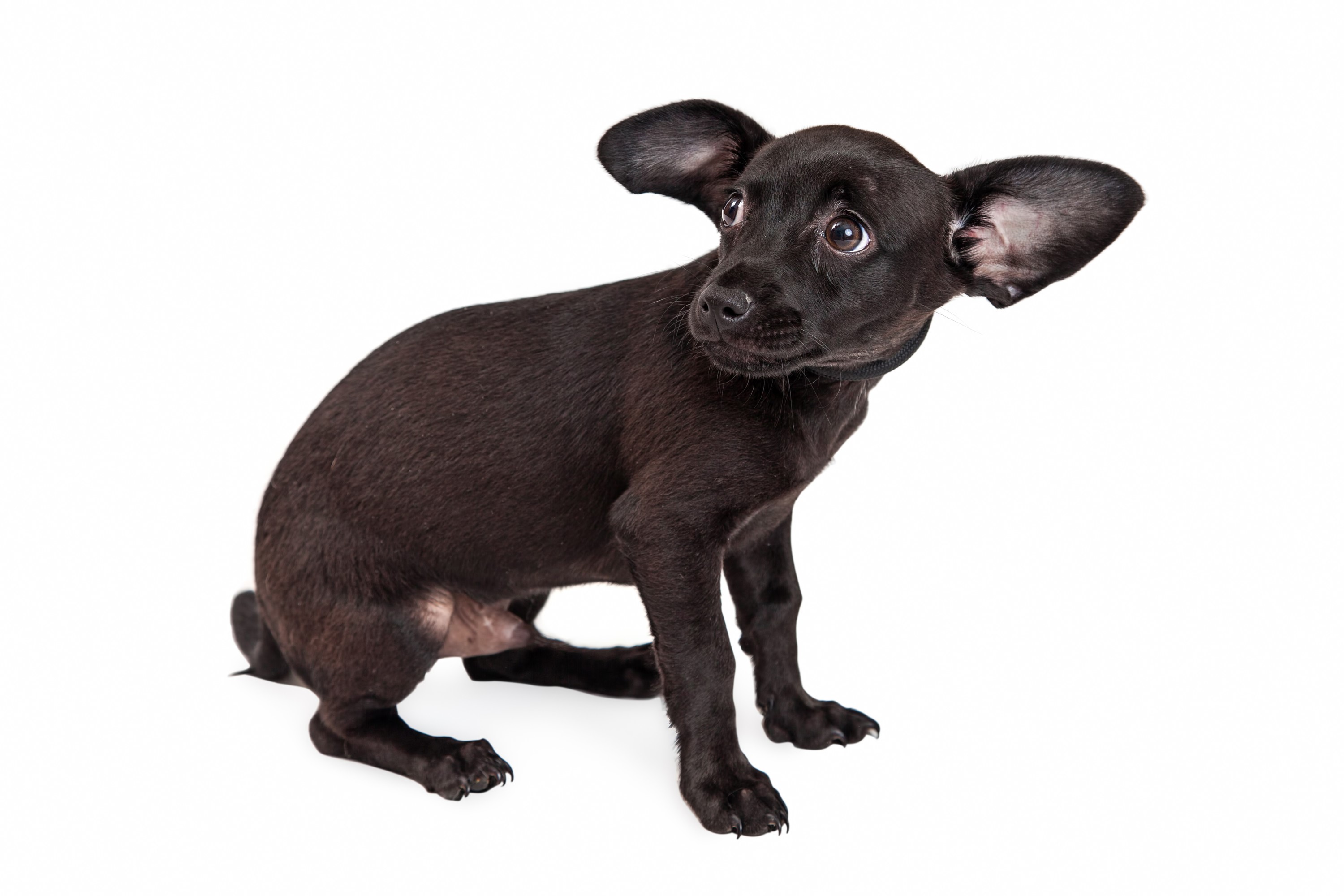
What the Dog Wants: Submissive dogs have no qualms about being labeled cowards, but they stop short of sporting signs on their backs that read, “Bite me.” They purposely make themselves small to communicate that they come in peace and pose absolutely no threat. It is the canine version of waving the white flag of surrender.
Some dogs cower because they have been victims of past physical abuse. These dogs sulk in order to protect themselves and to plead the case to leave them alone and unharmed. Finally, shrinking in size is also a sign of respect conveyed by a young pup toward a confident adult dog.
How to Respond: Dogs who cower need a confidence boost. This can be accomplished by giving them a little time and space during your initial visit with the client and during your first solo visits to care for the dog. When the dog crouches low and perhaps licks his lips and avoids eye contact, this is your cue to sit down quietly on a chair or the floor a few feet away. Speak in a calm, upbeat tone and avoid making fast or exaggerated hand gestures. Give this dog a chance to download you on his time schedule. Try tossing a treat his way. If he does approach, let him sniff you. Do not reach your hand out over his head because he may perceive this as a threatening gesture and snap or bite you out of fear.
STIFF TAIL WAGGING
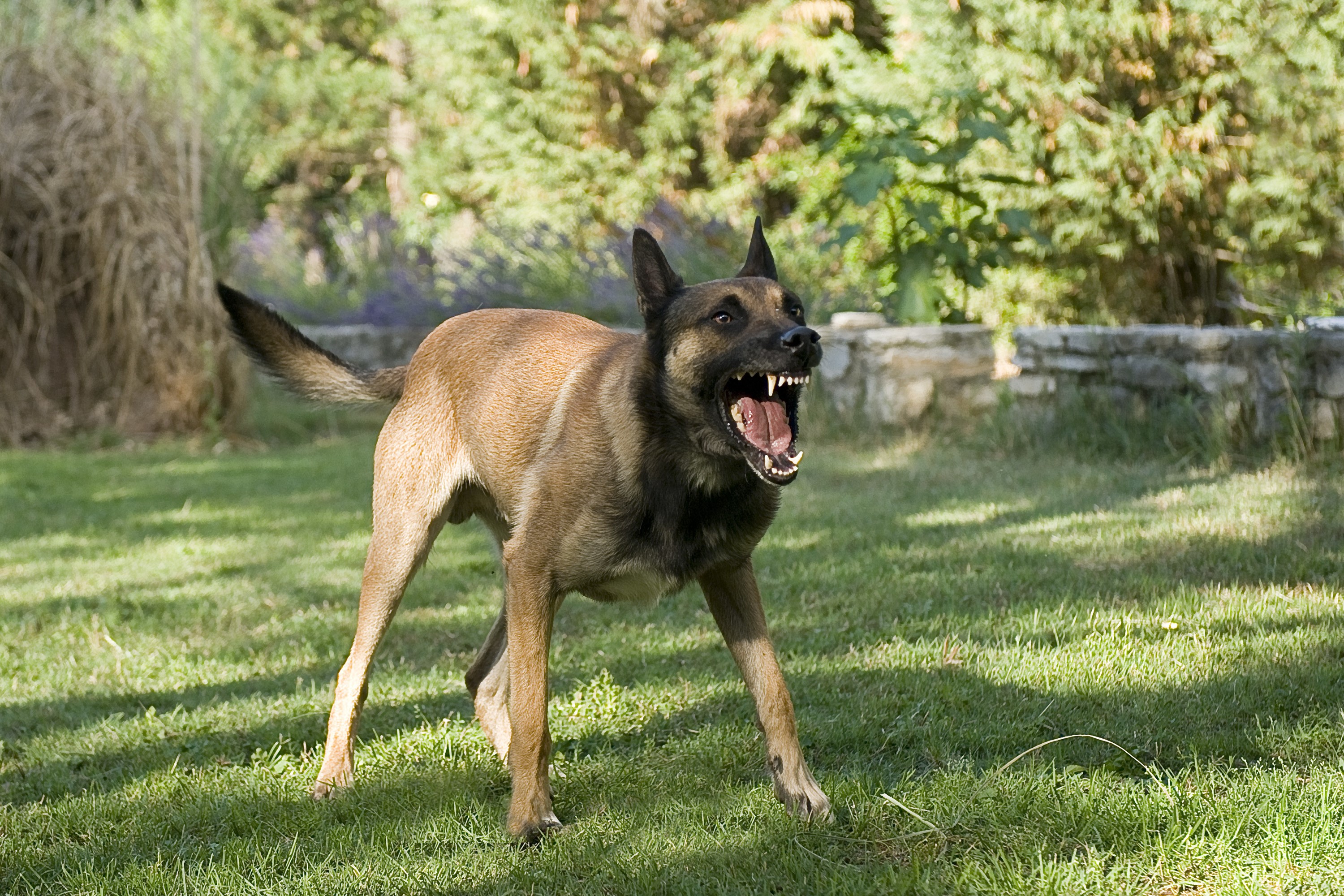
What the Dog Wants: Tail-speak is clear and candid, and is never deceptive. The dog is declaring to others to keep their distance when he strikes a tense body pose, stiffens and slows his tail movement to mimic the beat of a metronome. If you or another dog invades his perceived safety zone, he will snarl, lunge and may even lash out.
A confident, alert dog hoists his tail up and makes slow side-to-side sweeps as he focuses on a situation and decides how he is going to act and react. This tail posture signals high-ranking status in the dog world. A dominant dog wags his tail stiffly and slowly when he is being approached or when he confronts another dog. In response, the lower-ranked dog usually avoids direct eye contact and lowers his tail.
Different dog breeds carry their tails at different heights, but in general, dogs who are concerned, focused and ready to go into attack mode keep their tails stiff and parallel to the ground or raised. Some breeds that have curled tails, such as the Basenji, increase the tightness in their tails in
these scenarios.
How to Respond: Heed the dog’s message not to engage. Do not rush in to try to pet a dog who is still sizing you – and the situation – up. He is deciding whether to stay and fight or to flee. Do not stare directly into his eyes because he will perceive this action as threatening. Look at the dog’s entire body posture, especially in dogs with cropped or docked tails, such as Doberman Pinschers, Boxers and Bulldogs. Toss a treat to a weary dog when he makes this posture to try to shift his mood from cautious to calm. Do not attempt to hand-feed this dog or you may get bit.
PANTING
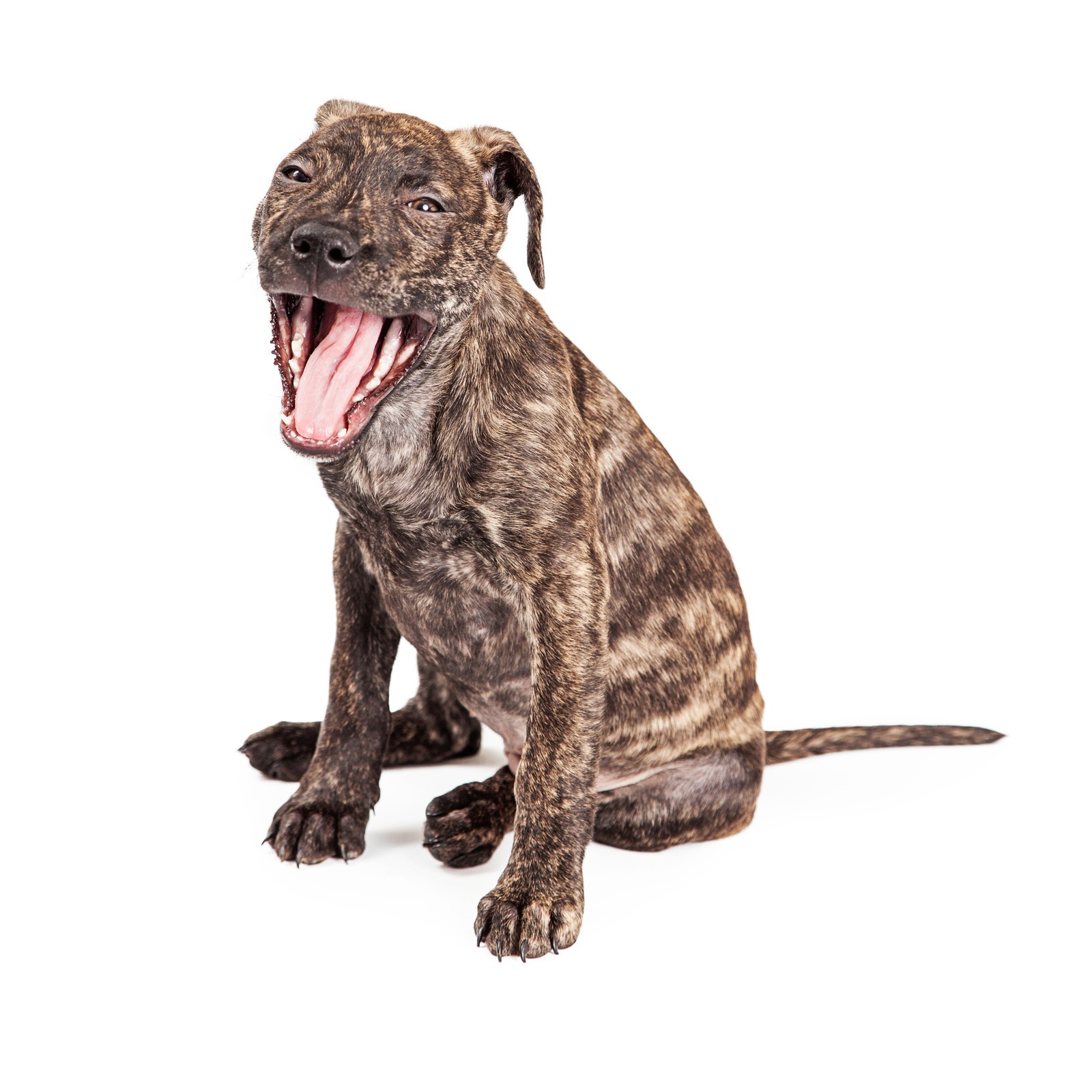
What the Dog Wants: Some dogs pant when they are too hot, scared or physically exhausted. All of these reasons can raise the dog’s body temperature. A couple degrees above a dog’s normal body temperature (ranging from 100 to 102.5 degrees Fahrenheit) can signal a health concern. Dogs do not sweat through skin pores as people do, but rather through the pads on their feet. Overheated dogs leave wet paw marks on the floor caused by sweating. Some dogs pant because they feel scared, anxious or tense – emotions that can raise body temperatures and trigger panting episodes.
How to Respond: If the panting is due to the dog becoming overheated, get him into a ventilated area and cool him down slowly by placing his paws in cool (never ice-cold) water and placing cool wet towels on his abdomen area. Do not use ice as the extreme change in temperature can shock a dog’s body.
Never put a dog in a crate in the corner of a room covered with towels. You will block any ventilation and he may start panting because he is overheated. Do not over-exercise a dog, especially on a hot day by taking him for a long run. And, it goes without saying, never leave a dog inside a closed car on a warm day. The temperature inside a vehicle quickly spikes and can resemble that of an oven.
YAWNING
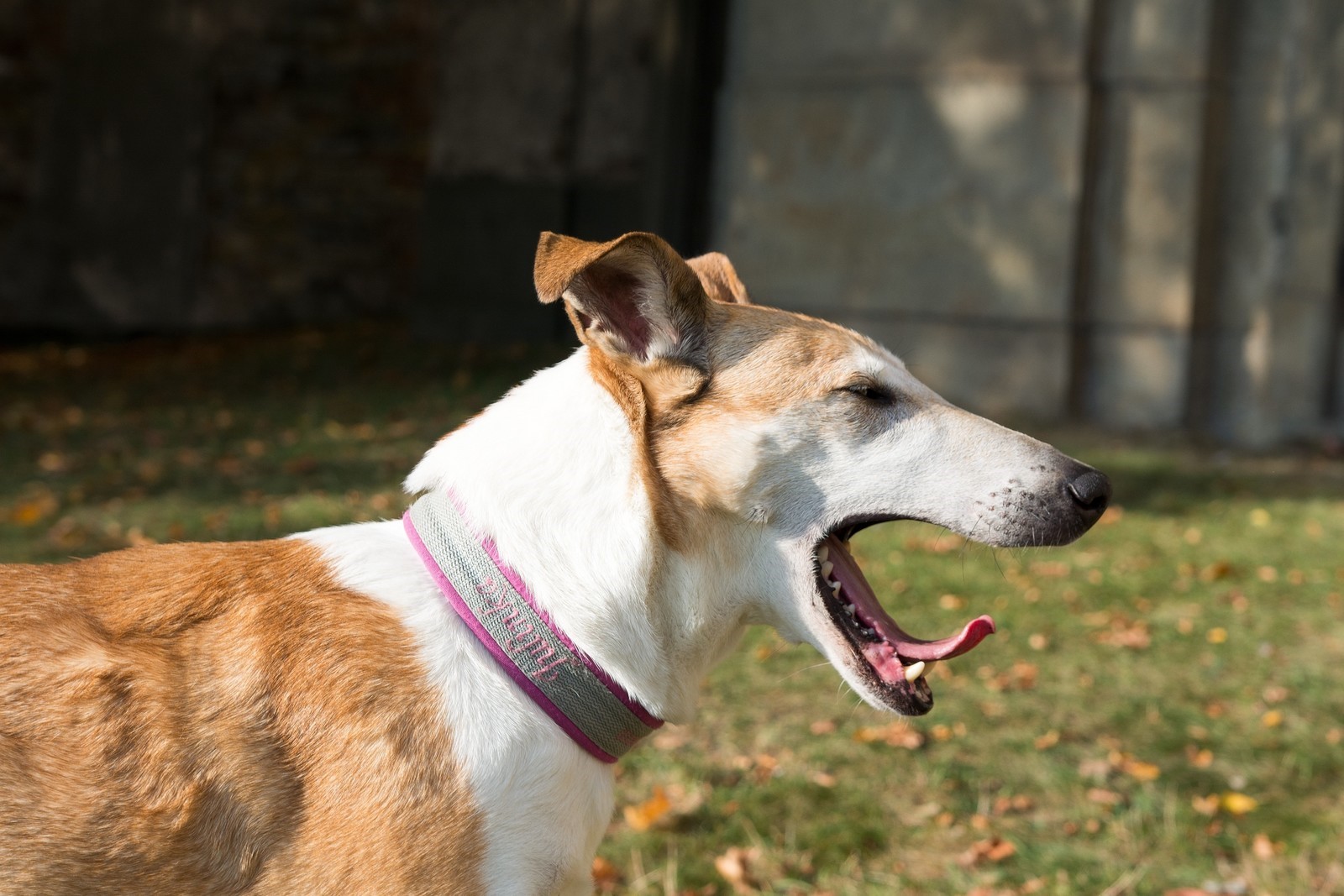
What the Dog Wants: Yawning is more apt to indicate stress than fatigue. It is one of the primary go-to calming signals that dogs use. The maneuver is employed to diffuse a potentially explosive situation.
Some dogs, especially intelligent ones who cat on to new tricks quickly, grow tired of long, repetitive training sessions. They may start to yawn and scratch their heads with their back paws as a way to relieve stress, take a break from concentrating too much and to re-energize. Just like people, dogs yawn when they are bored and tired of dull routines. They also yawn when they see another dog or person yawn. For unknown reasons, yawning can be contagious.
How to Respond: Take a break from the intensity and during of a training session when a dog starts yawning. He is trying to tell you that he needs a rest. Dogs learn best in mini-sessions. Slowly build, step-by-step, on each success with each training session.
Be clear and concise in communicating with dogs. If you give conflicting signals or confusing commands, the trying-to-please dog may respond by yawning because he is stressed and anxious. To calm an anxious dog, get his attention, lick your lips and make a big yawn yourself. Do not fall into a rut with the dog’s daily walks. Break up the routine by taking him to a new place to give him new places to sniff and explore.
NIPPING
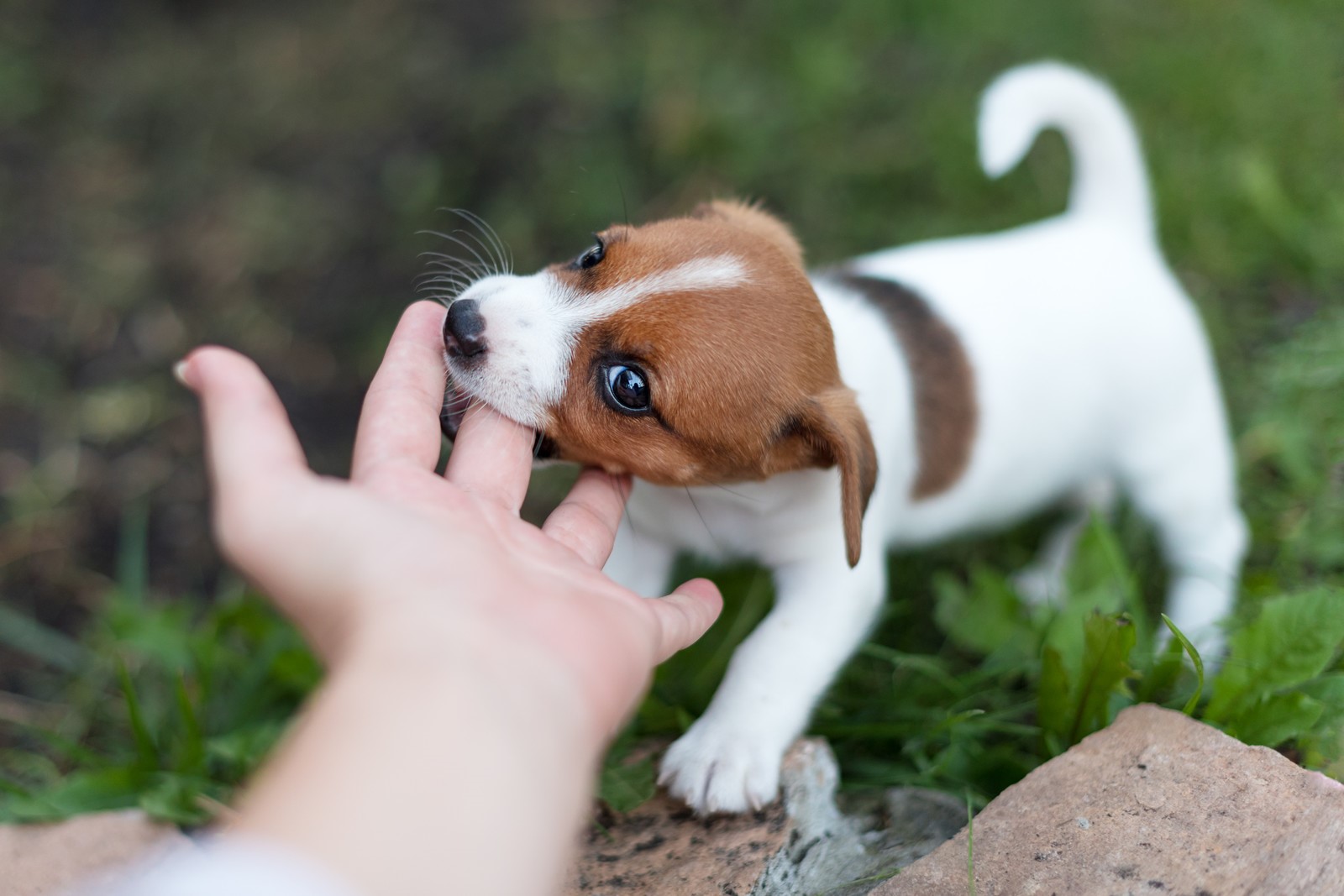
What the Dog Wants: Young puppies nip when they play. Puppies understand that a nip is part of the sport of tussling with their siblings or another puppy. When they leave the litter and go to a new home, a puppy usually brings this habit with him. Unfortunately, puppies often extend this
type of play to people.
Adult dogs use nips as warnings, to send the message that they are dominant or that they want you to stop whatever you are doing because they are hurt or feel afraid. Dogs also nip because they think they make the rules are the most dangerous nippers of all. If you want to move the dog from the couch or bed and he nips at you, he is telling you, “I am in charge and I say back off.” Some dogs nip because they have an instinct to herd. Dogs who are bred to interact with livestock are naturally nippy because their teeth are a good weapon against stubborn sheep or cattle. For these dogs, nipping is part of their herding styles. Examples are corgis, border collies and Australian shepherds.
How to Respond: Although puppies are being playful when they nip, this action is another one of those unacceptable behaviors that should be strongly discouraged. The best way to do so is to stop interaction with the puppy and even let out a loud, “Ow!” if he gets nippy. He will soon learn that this action means the end of contact with you and the end of a good time with you.
Herding breeds need to be taught from a young age that they are not allowed to nip at people. A consistent and firm “No!” and the termination of the play session should be enough to get the message across.
Finally, you do not want the client’s dog to be calling the shots during your visit. Pushy, bossy
dogs need to learn that you are the leader and the keeper of all good resources: food, play and
attention.

